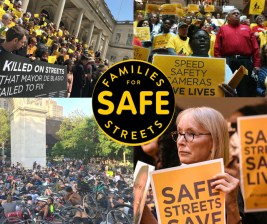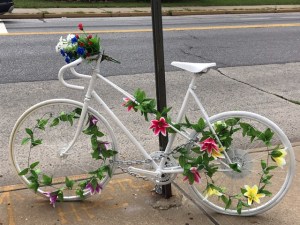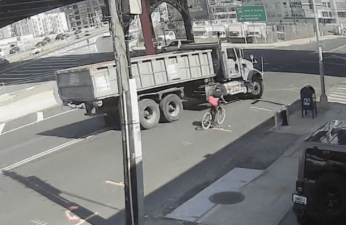OPINION: Stopping the Lawless Drivers Behind Our Traffic Violence Crisis
Less than 1 percent of motorists cause most of the havoc. We can take countermeasures.

New York City lost 59 residents to traffic violence during the first three months of 2022, a 44-percent jump from the previous year. Less than 1 percent of drivers are responsible for most of these tragedies. Drivers who have a prior record of citations, be it parking, speeding or, worse, driving under the influence or with a revoked license, cause a higher percentage of serious injuries and deaths on public streets than those with a clean driving record. So, how do we reach the very small population of aggressive, law-breaking drivers who cause streets to be deadly across the five boroughs?

Mayor Adams and his predecessor have held many press conferences to mourn the deaths of the innocent and taken important steps to make our streets safer. The Department of Transportation implements street-improvement projects in order to introduce new engineering safety features. The NYPD publicizes traffic-enforcement campaigns. And the Vision Zero program has print media, public-service announcements, and other public education to bring attention to the traffic-violence epidemic.
But the deaths happen again and again because we cannot engineer, enforce, or educate ourselves out of the way of our most dangerous drivers. They will keep jeopardizing pedestrian and bicycle safety as long as the streets, cops, courts, and society let them. These are the individuals who have racked up unpaid traffic citations, incite road rage, and attempt to disobey the laws of physics behind the wheel for untold reasons. Are they always running late? Are they thrill-seekers fueled by adrenaline and the chance a video of their exploits will go viral? They are the ones who speed and change lanes aggressively on busy streets by day and roar down empty streets with modified mufflers by night.
As a transportation engineer with more than 20 years of experience focused on street safety, I have read thousands of crash reports; the solutions that the city urgently needs are inherently complicated.
Sometimes, the driver was clearly begging for disaster, grossly exceeding the speed limit during a joy ride before their luck changed. Other times, he or she was distracted just for a moment — but it was the wrong moment.
Another important consideration is that street-safety engineering countermeasures and enforcement presuppose certain rules. Engineering assumes that if you enact reasonable speed limits, place warning signs, narrow lanes, tighten up wide streets, and install bike lanes and crosswalks, that drivers, cyclists, and pedestrians literally will stay in their lane. Enforcement assumes that police presence (physical and automated) will deter bad behavior.
But neither engineering nor enforcement succeed when drivers either ignore the rules or seek to break them. So, that leaves the problem up to the courts to change behavior after things go bad, and only after we begin to clamp down harder on traffic-violence offenders. By strengthening the legal system with higher penalties and longer sentences for dangerous driving, it could deter the very small percentage of motorists causing the majority of traffic violence.
Adopting adequate technology on the front end also could stop dangerous drivers from making bad choices. Why are we given a break on speeding tickets until we exceed 10 miles per hour over the legally posted speed limit? This practice is a relic of the time before widespread radar speed-collection technology, when courts could not prove a motorist was speeding if it wasn’t clear. Why are alcohol locks and speed governors not standard on all cars to ensure the driver is observing the law? The insurance industry could use its influence to lobby the federal government for such changes in the name of safety and savings on insurance payouts.
Our city needs these kinds of responsive countermeasures in order to curb traffic violence and reach the very small percentage of dangerous drivers who can’t be stopped otherwise. City and state legislators must strengthen laws and lobby automakers and insurance companies in order to carry out these changes and make a real difference in saving lives.
Matthew Carmody, an expert in transportation safety, is vice president of Traffic & Transportation Engineering at AKRF. This story has been updated. An earlier version presented one of the author’s points in a way that contradicted long-established facts.



